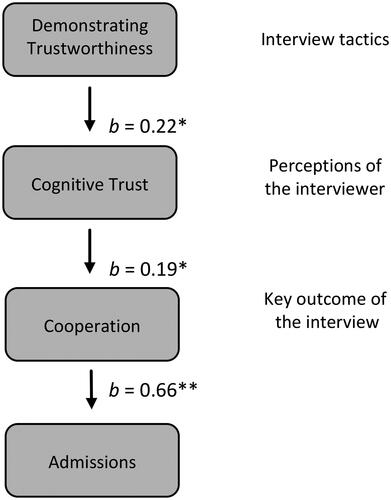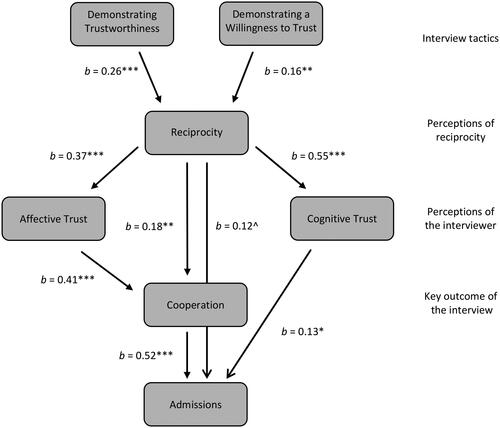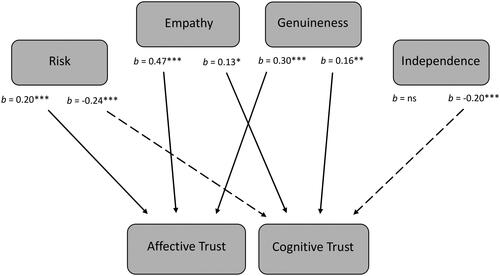Figures & data
Table 1. An Overview of the Main Psychological Constructs and Items Used.
Figure 2. Observed path model illustrating effects sizes of the direct effects of trust-building interview tactics. *p < .05; **p < .01; ***p < .001.

Figure 3. Observed path model illustrating effects sizes of the direct effects of trust-building interview tactics. *p < .05; **p = .01.




